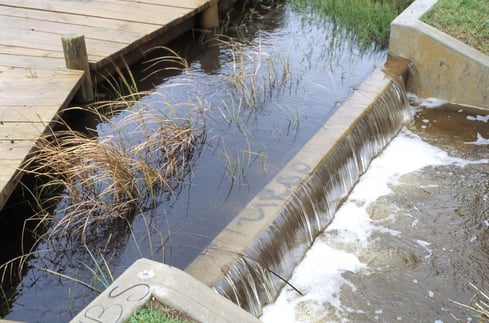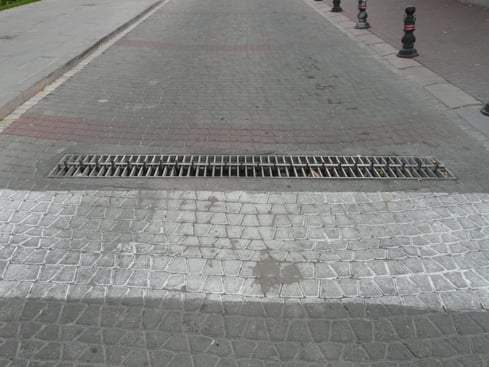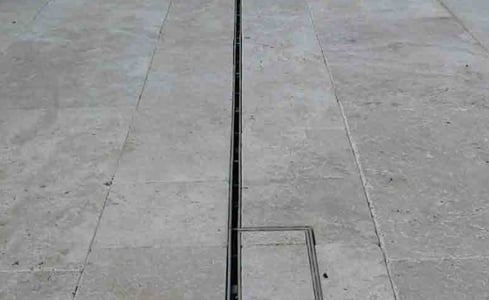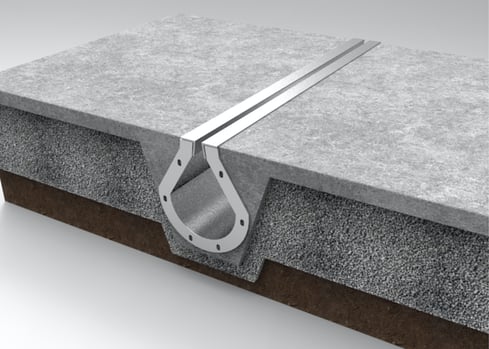Rain and snow are unavoidable elements of nature; in some ways, they are good, but they aren't without their downsides. Both create stormwater, which flows over the ground. In some cases, soil immediately soaks up the water, helping keep plants alive and healthy. Other times, it passes over sidewalks, parking lots, and other outdoor urban and suburban environments, picking up oil and other pollutants. Without the proper stormwater management in place, this can lead to many serious issues.
The Problem with Stormwater
Bacteria, fertilizer, oil, animal waste, and trash are just some pollutants that can contaminate stormwater. Without proper management, this polluted water can flow into rivers and streams. Polluted water runoff can cause many serious issues, including:
Fewer recreational uses for lakes
Polluted water runoff leads to contaminated bodies of water, making them unsafe for many kinds of activities. Officials may ban activities like swimming, fishing, and even boating due to safety concerns.
Harms and kills marine and wildlife
Polluted runoff isn't just dangerous for humans–it is also hazardous for marine and wildlife. This contamination can kill fish and make other marine animals sick. Contaminated water and marine life can also make the wildlife sick and potentially lead to more deaths.
It isn't just the pollution that is harmful; excess stormwater in rivers and streams also increases the chances of flooding. These various factors are what make having the right type of stormwater drainage system so critical.
Destruction of natural habitats
Water runoff that is full of harmful pollutants can kill plants or make them sick. It can mean the loss of homes and food sources for many animals.
Reduction in quality of drinking water
Many places rely on natural bodies of water for at least some of their drinking water supply. If the natural supply becomes contaminated, it requires more sanitation processes to ensure that it is safe for consumption. Otherwise, it can lead to serious illness.
Types of Stormwater Drainage Systems
There are many types of stormwater drains that can be used to manage stormwater. The purpose of these systems are all the same, however, their appearance and the way they function varies.
Ditches and Swales
Ditches and swales are two types of systems used to help reduce the flooding, soil erosion, and pollution typically caused by stormwater runoff. Both are similar in appearance, featuring wide, open channels. Swales, however, feature a more engineered design with gentle side slopes and flat, wide bottoms. Once stormwater goes into a ditch or swale, it is either channeled into the ground or a nearby stormwater pond or other holding area.
Dams

Dams are another of the various types of storm water drainage system options. Dams are man-made barriers that can serve a variety of purposes, including controlling and storing stormwater runoff. Stormwater management facilities may use dams to store excess stormwater runoff in a wet or dry pond. Dams can vary in size and are found in a variety of places.
Curb Cuts and Sidewalk Underdrains
Two types of stormwater drains that are found everywhere are curb cuts and sidewalk underdrains. These systems collect stormwater runoff from roadways, redirecting it to swales or another point of discharge.
Catch Basins

Catch basins, or drywells, are another common choice. Catch basin systems consist of a surface grate, typically on the road. The grate is connected to a perforated tank, which allows stormwater to percolate gradually. The stormwater then collects in the sump, and the sediment settles on the bottom. Clean water then flows through pipes to various destinations including swales, stormwater ponds, rivers, and streams.
The Issue with These Systems
These types of stormwater drainage systems can be extremely effective in the management of stormwater, but they aren't perfect. Swales and ditches require maintenance such as weed control, reseeding, and clearing of debris and other accumulated sediment. Curb cuts, sidewalk drains, and catch basins also require maintenance to prevent clogging from debris and other sediments. Poorly maintained systems can lead to ineffective stormwater management. These systems are also typically big, bulky, and can lead to accidents if people aren't careful.
A Modernized Drainage System

Slot Drain is a newer trench drain system that provides an alternative to the traditional types of stormwater drains. Slot Drain systems come with a slim opening that doesn't require a grate cover, making them less obtrusive. The slim opening also ensures debris and large sediment won't clog the drain, without minimizing the flow rate. A catch basin helps to help catch objects and debris to ensure nothing enters the sewage system.

The Slot Drain system provides industrial strength, making it ideal for roads, as it will not break or bend under the pressure of cars and trucks. The design also makes maintenance easy, with the option of Clean-In-Place allowing for an automated process in some models.
Better Stormwater Management
The proper management of stormwater runoff is critical to preventing flooding and the pollution of other water sources. Choosing the right system for a given area is also critical to ensuring it is as effective as possible. There are many traditional types of stormwater drainage systems, but Slot Drain is a sleeker, modern, and more effective alternative. With a Slot Drain system in place, stormwater will drain from the surface and be sent to the appropriate holding area for further management.
Contact the drainage experts at Slot Drain today to get more information on stormwater drainage systems.


